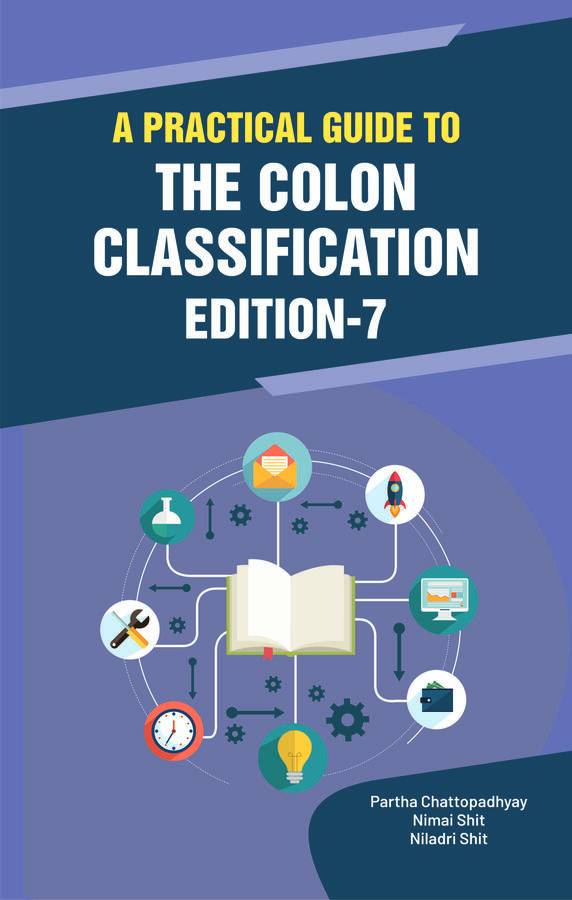This book, A Practical Guide to the Colon Classification Edition-7 is perhaps the first of its kind to promote the ideals of the father of library science in India, the great Dr. S.R. Ranganathan especially from the view point of his unique Colon Classification scheme. Authors with the strenuous efforts devised ways and means to highlight the Colon Classification scheme in the simplest form. Since classification serves as a basis for resource organization that ensures proper and timely resource retrieval, a library classification still remains the backbone of information collection, processing and dissemination process. Among the major library classification systems in vogue, the DDC, LCC, UDC and Colon Classification System are noteworthy. However, DDC, the brainchild of Melvil Dewey is considered as the most popular library classification scheme for its easy notational usage. LCC with the least mnemonic verticals and UDC with the added complexity fall short of eliciting the desired responses from the classifiers as evident from the lesser usage of the respective schedules across the regions.
The latest schedule of Colon Classification (7th edition), is the improved one from its preceding 6th edition. However, it lacks the index, making it difficult for the users to use it in an un-intervening way. The beauty of CC lies in its strength of faceted nature, however, efforts to use it effectively are few and far between. In this book, a sincere effort has been made to embolden the practical implementation of this unique classification scheme.
Empowered with numerous examples, the book has enriched the understanding of the students and professionals in library science for the effective use of CC. It has been observed that students often get confused while using CC because of lack of proper understanding about the classification scheme and scarcity of associated guidebooks. Here comes the assistance for those who wish to use CC and whose syllabus has a comprehensive coverage about CC.
The solved examples and exercises are meticulously enumerated in this book keeping in mind the need to encompass diverse topics to ensure that students and professionals who wish to implement CC in their library can get varied exposure which will escalate their confidence manifold to encourage them to embark on problem solving endeavor.
The book also neatly presents a comparative aspect of three major schemes of classification and discusses Colon Classification in detail to improve the idea about the classification scheme. Moreover, a depth classification approach has also been made for the segregation of documents around an unidisiplinary subject area. Furthermore, an FAQ section was thoughtfully incorporated to clear any doubts that may crop up while consulting the scheme.
In their endeavor the authors have put their best in this book to give a new dimension to this unique faceted classification scheme while the series of work out examples will smoothen the interactions of the students, library professionals and other users with the CC. Moreover, the book with its enriched contents will encourage future researchers to go for further improvement on this classification scheme and think for incorporations of emerging micro subjects in commensurate with the changed vocabulary.


